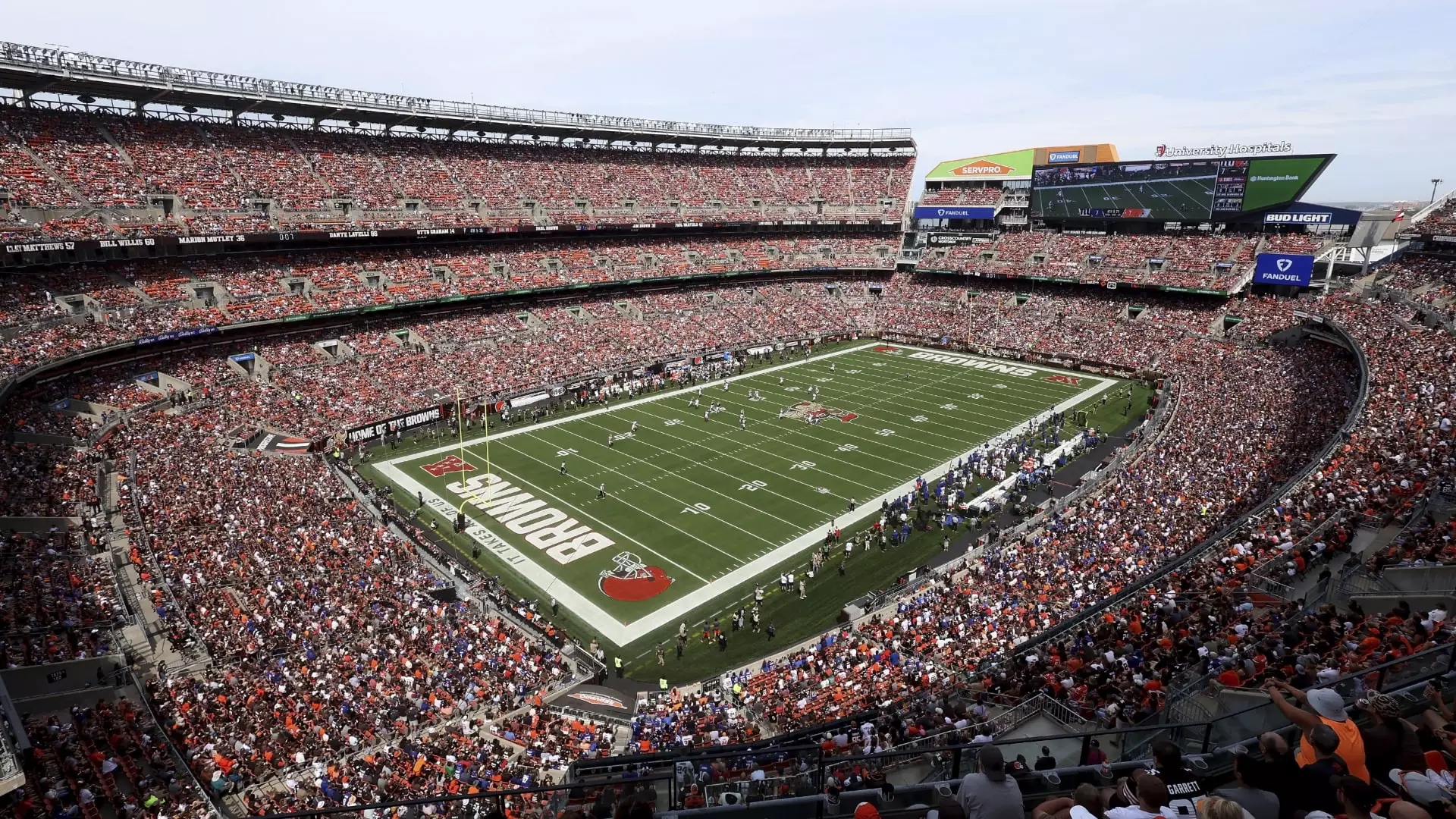In a surprising turn of events, the Cleveland Browns have decided to leave their current home by Lake Erie, opting for a brand-new domed stadium in Brook Park, Ohio. This announcement has sparked intense debate about the motivations behind the move, the implications for Cleveland, and the broader impacts on local communities. The decision, revealed by Cleveland Mayor Justin Bibb through a press release, was characterized by the mayor as a profit-driven choice that overlooks potential opportunities for community enrichment and development.
The ownership group led by Jimmy and Dee Haslam confirmed the relocation, asserting that the lack of a domed stadium limited the franchise’s operational capabilities, particularly for events beyond the NFL season. According to the Haslams, the existing stadium in Cleveland presented challenges that made it less economically viable compared to the proposed Brook Park venue.
Mayor Bibb’s reaction was sharply critical of the Haslams, whom he accused of prioritizing profit over the welfare of the city. In his statement, he emphasized that the ownership had failed to seize opportunities for reinvesting in Cleveland, which could have transformed the existing venue into a cutting-edge space while still maintaining profitability. Bibb’s statement highlights a common tension in sports team ownership: balancing business imperatives with community obligations.
From an economic standpoint, the significance of a domed stadium cannot be understated. The potential revenue generation from hosting non-football events has become a focal point for franchises seeking to ensure year-round profitability. For instance, an NFL stadium reportedly garnered an astonishing $4 million in revenue per event during high-profile concerts, underlining the financial advantages a dome could bring. However, critics argue that such a focus on profits has overshadowed the potential for meaningful community engagement.
The financing plan for the Brook Park dome, projected to exceed $2 billion, includes significant private investment as well as some public funding aimed at supporting economic development. While the Haslams assert that taxpayer dollars will not be used to fund the stadium, the economic realities suggest that the project will still create a financial burden on the city. Mayor Bibb noted that Cleveland stands to lose approximately $30 million annually in economic impact due to the Browns’ move—a stark reminder of the stakes involved for local businesses and the city’s economy.
Despite this impact, the Haslams maintain that their plans will ultimately benefit the greater Cleveland area. They argue that the new venue could generate enough activity to support public investments without incurring ongoing taxpayer liabilities. The optimistic tone from the Browns ownership stands in marked contrast to the mayor’s critique, revealing a significant divide in perspectives on economic development.
The potential departure from Cleveland doesn’t necessarily spell the end of negotiations. Mayor Bibb has indicated openness to resume discussions if the Brook Park project encounters challenges. This willingness to negotiate reflects a recognition of the deep-rooted relationship between the Browns and the city—a connection that has influenced local culture and identity for decades.
As the city grapples with this tumultuous transition, the question arises: is it too late for Cleveland to retain its connection with the Browns? The long-standing legacy of the team cannot be easily dismissed, and local fans may feel a profound sense of loss if the franchise migrates entirely. As discussions about potential renovations or alternative plans for a new stadium in Cleveland continue, it remains to be seen whether the two parties can reach a mutually beneficial agreement that honors both the economic imperatives of the franchise and the sentiments of the city’s residents.
The Cleveland Browns’ move highlights a broader trend within professional sports: the increasing emphasis on maximizing revenues through modern facilities capable of hosting a variety of events year-round. This trend raises questions about the social contract between sports franchises and the communities that support them. Are franchise owners pursuing loneliness profits at the expense of local identity, or are they creating viable economic opportunities?
As cities compete for franchises, the dynamics of the sports economy continue to evolve. The Cleveland Browns’ relocation serves not only as a local issue but also as a broader case study on the intersection of sports, economics, and community involvement. Ultimately, the decisions made by ownership groups will have profound implications for the fabric of their cities and the hearts of their fans. Whether this move marks a new chapter for the Browns or signals a rift with the community remains to be seen.


Leave a Reply